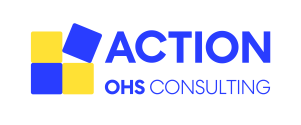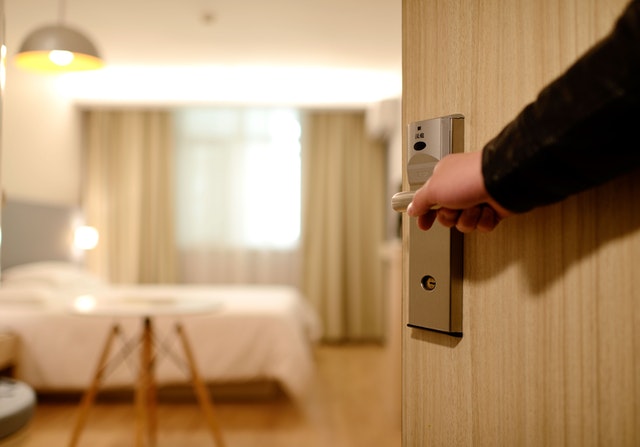In this blog we will share our learnings from the hotel quarantine bungle in Melbourne.
“…Those Who Do Not Learn from History Are Doomed to Repeat It.” – George Santayana
I am sure that you have seen this quote before – or slightly different versions of it. When reviewing the apparent failings in the handling of the COVID-19 hotel quarantine scheme in Melbourne, this quote quickly springs to mind.
If ever there was a time to take lessons from the past and apply them in practice to avoid similar catastrophic outcomes, it is now and this situation.
I penned this article because I believe we can learn from some of the shortcomings I see, with respect to the management of this scheme. I will draw out key lessons that can be applied in our workplaces, to help us avoid repeating the some of the mistakes made in health and safety management in this so-called hotel quarantine bungle.
Note, I do not have inside sources. My understanding of what has occurred is based on the dialogue shared from multiple news and media sources. Whilst more information with respect to what happen will no doubt be shared at a later stage following the inquiry, the intention of this article is to use a practical and current example, to walk you through how the risk management approach could be applied in this instance, with the information at hand.
As you read this article, my hope is that you will be more comfortable with the risk management process, allowing you to confidently improve safety performance at your workplace.
What were the [reported] mistakes?
In late March, the Victorian Government awarded security contracts for the hotel quarantine scheme to multiple private based security firms. The scheme was designed to safely house people returning to Australia in compulsory COVID-19 isolation in various hotels throughout the city, to avoid any community spread from possible positive COVID-19 cases.

However, due to the reported mismanagement of the scheme, it has been suggested that Melbourne’s COVID-19 July second-wave could be traced to people in these hotels.
Whilst there is a current Government inquiry into exactly what occurred, some information (whether real or speculated) has been revealed. That is:
- Security workers were recruited on an adhoc basis, with some recruited through ‘cold-calling’ or via a mobile phone text.
- Security workers were given very little training in how to manage what were potentially difficult and high-risk clients, confined to their hotel rooms for two weeks.
- Security workers were given no or little training in relation to physical distancing.
- Security workers were given inappropriate amounts of Personal Protective Equipment with little training about how to use it correctly. In many cases security guards were forced to reuse single use masks.
Certainly, the full extent of these failings will be determined in the inquiry, we can deduce from the information at hand that problems may have resulted from three main shortcomings:
- the wrong person for the job,
- a lack of training and information to enable workers to do the job safety and properly, and
- a lack of equipment to enable workers to perform their tasks safely.
What can we learn in relation to safety in our workplace?
This example presents a very stark reminder to all of us about effective health and safety management.
1. The first is that effective safety outcomes at work don’t just happen!
It takes explicit consideration of:
(i) what could go wrong (i.e. how the work [hazard] could injury and/or harm a workers, contractor, visitor, or the public); and
(ii) what practices you will implement to manage this injury and/or harm from occurring (i.e. what are your controls).
When looking to establish controls, consider compliance codes and what others are doing to manage the foreseeable hazard.
To support consistency, allow future reflection, and ensure knowledge is not lost; consider documenting the agreed procedures.
2. The second is to be thorough when identifying and assessing controls
This scenario has demonstrated that not only should businesses consider the controls, they should consider both “how” and “why” workers “could” or “would” circumvent the controls. It is accepting that if you stop at the first identified control, whilst “academically” it may sound effective, in reality it may not be “implemented”.
In this situation, Safety as Imagined = Effective; whilst Safety as Done = Ineffective.
When challenging controls, I have always found it beneficial to ensure you have one or more people playing devil’s advocate. Business often don’t dedicate the time to risk management that they should.
Life experience tells us that rules are made to be broken. Consider using this foresight at the risk assessment stage, rather than settling for the first identified control just so you can move onto the next task. It may save you time now, however, it is sure to see you spending much more time in the future.
3. The third is to upskill your people!
Not only is it important to find the right people for the job; but once you have done this, workers need to understand the potential hazards associated with their work, and the controls that have been established.
Rather than reciting rules to your workers [for them to remember], engage them in fully understanding the hazards and controls through communication, discussion and training.
If you can’t explain why the control is important, and how it will assist in managing the hazard, perhaps, you have not found the right control yet, or, it’s not a safety hazard you are trying to manage.
I have often found that explaining the “why” and “how” to be more effective when discussing hazards and controls. Why? It better resonates with the workforce and allows you to really explore and understand what is happening. If you understand something, you really know it. Yet, if you are simply reciting rules, this may not stick.
4. The fourth is to monitor your efforts and learn
This step will allow you to respond to danger signals early.
When monitoring, don’t take any breakdowns or failures identified in your controls as a negative. Consider these an opportunity to improve. And if your monitoring efforts are not picking up any breaches, revert to point 2.
Just how much harm may eventuate from any failures in your controls will vary. Sure, you may get lucky and nothing will happen. We hear this often. However, in addition to managing against harm and/or injury, a risk assessment can improve productivity and reduce downtime.
Where to start?
Though the safety journey can be daunting, it is critical. Often a big challenge for business owners and leaders is getting a good picture of safety in your organisation and then taking the first step.
How do you eat an elephant? I bite at a time. Clearly, no one is encouraging dining on these fantastic animals, but it’s good advice about how to tackle a huge, overwhelming project. Break down what is required into bite sized pieces, prioritise and then address each in turn.
Certainly, the presence of COVID-19 in our world presents a great opportunity for all business to review the time they explicitly put into managing safety. All organisations, across all industries, are now required to have an established “COVID safe plan” that keeps their people and the broader community safe.

As such, consider COVID-19 is as another hazard. One to be addressed in a similar fashion to any other hazard. Perhaps your team could schedule time to look at how you manage other hazards?
Then, whilst you’re at it, consider the risks to the health and safety of the people in your workplace. Ergonomics. Fatigue. Manual Handling. Forklifts, Mobile Plant or Traffic Management. Occupational Violence or Bullying. The list goes on. And put steps in place to mitigate those risks.
Let’s keep in mind that whilst mistakes can be made, lessons can always be learned. So, take some time away from your regular work and sit down to consider how you can apply these lessons to your work health and safety practices and protocols. Even just considering the simple steps outlined above can do wonders when it comes to protecting the people in your workplace from unnecessary harm.
Stay up to date on the latest news. Read our blog here.

